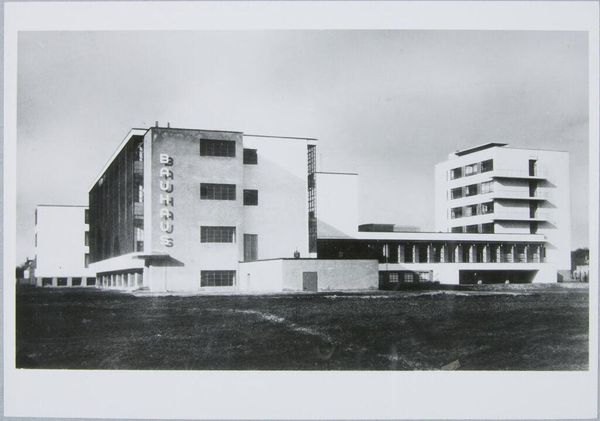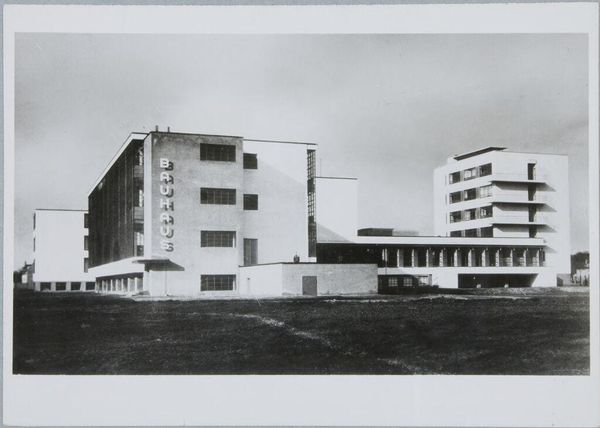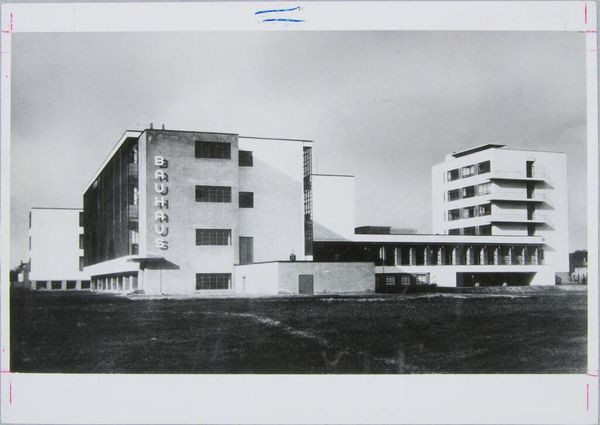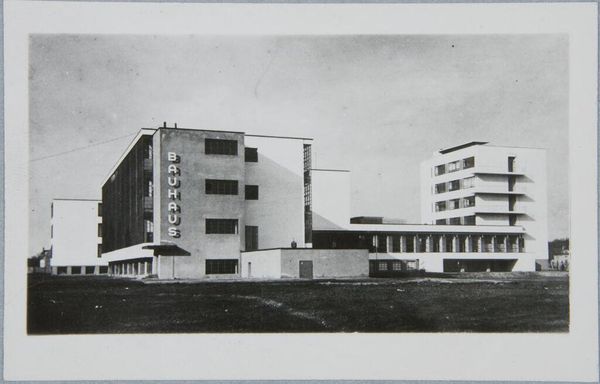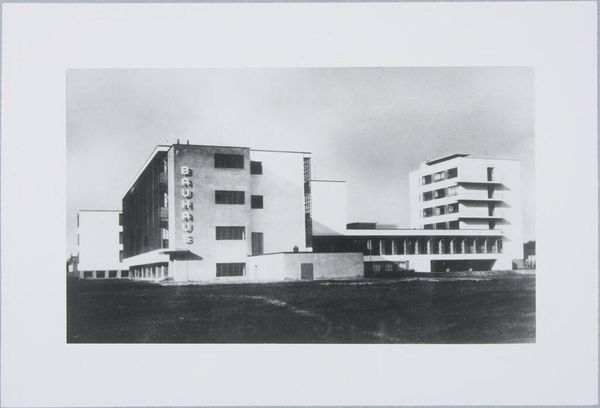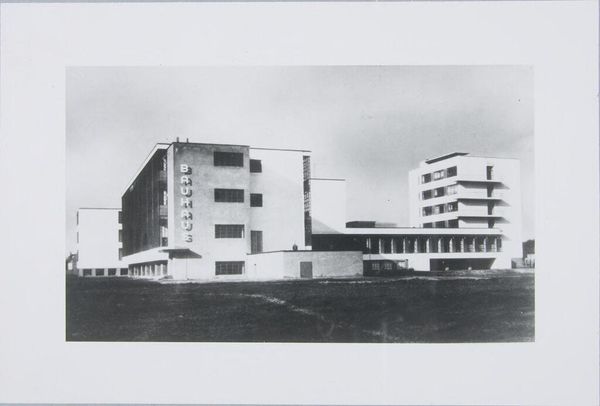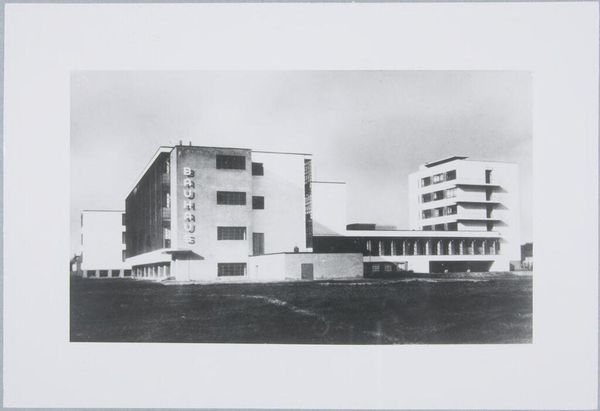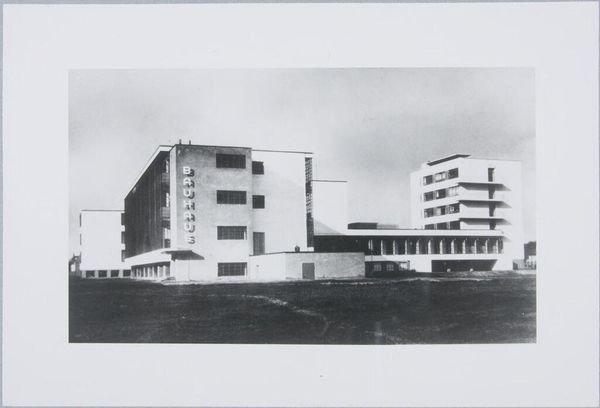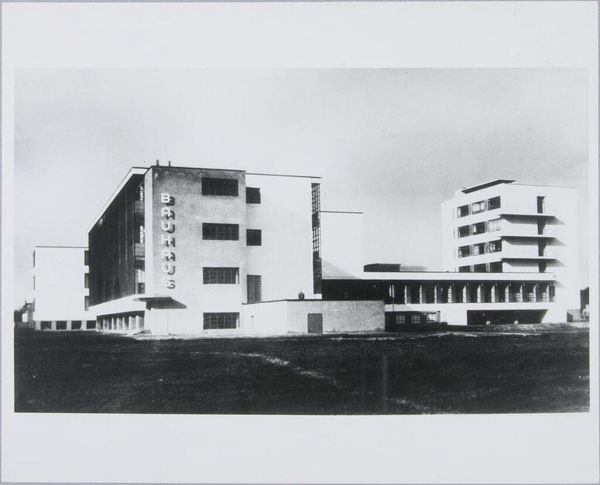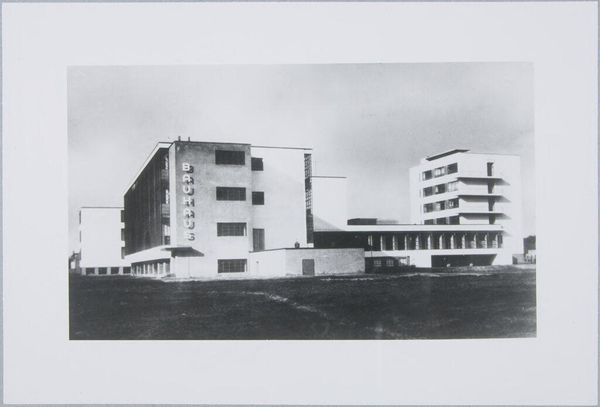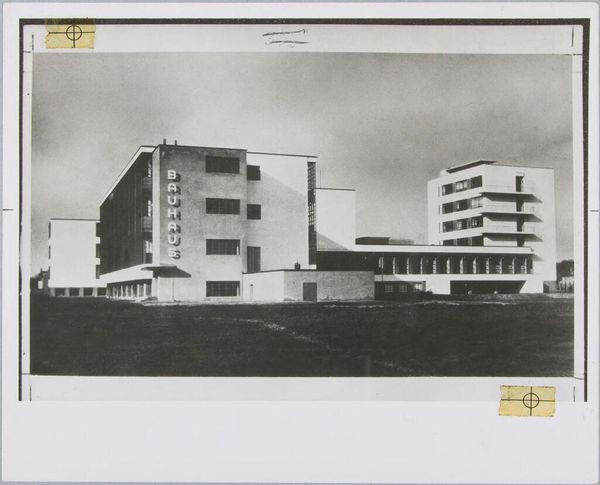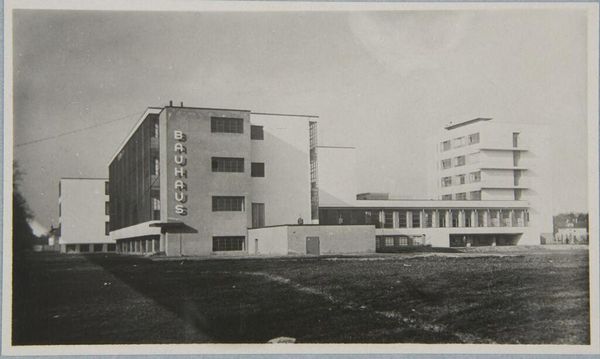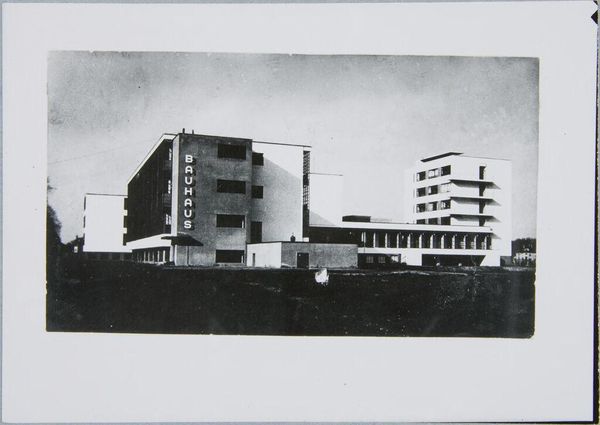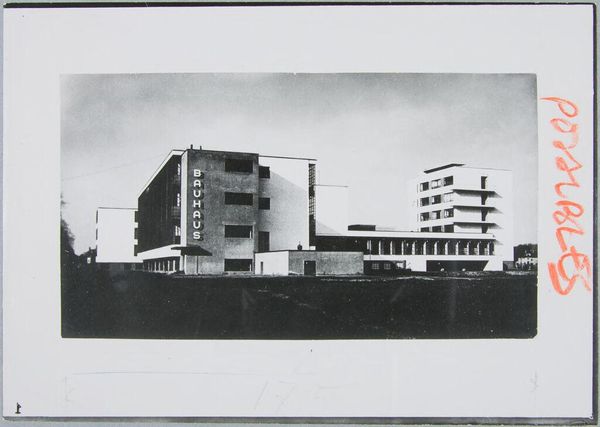
Bauhaus Building, Dessau, 1925-1926: View from southwest after 1926
0:00
0:00
Copyright: CC0 1.0
Curator: Klaus Hertig's black and white photograph captures the Bauhaus Building in Dessau around 1926. My first thought is how stark and… deliberate it seems. Editor: It’s a monument to functionalism. Consider the Bauhaus's role: it sought to unify art, craft, and technology, envisioning a radically egalitarian society. Curator: Yes! I see the intention. The lettering running vertically...it feels so assertive. Like a declaration of principles, almost too optimistic. Editor: Optimism, yes, but also the avant-garde's belief in reshaping society. The Bauhaus challenged bourgeois values, pushing for accessible design for all. Curator: But that starkness, though, it almost feels utopian and sterile at the same time. What about the human element? Is it lost here in all these clean lines? Editor: It's about redefining the human element. The Bauhaus argued for design that served human needs directly, stripping away ornamentation. It’s an idea of progress tied to social change. Curator: So, Hertig’s photograph becomes more than just a record of a building; it's a document of a social and artistic vision. Editor: Precisely. And one we're still grappling with today.
Comments
No comments
Be the first to comment and join the conversation on the ultimate creative platform.
